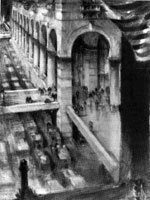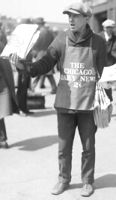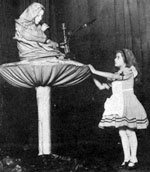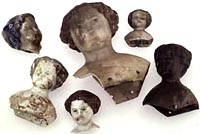The 3Cities Project

A collection of 10 essays on "the modern American city as a space of representation," using New York, Chicago, and Los Angeles in the years between the 1870s and 1930s as focal points for interdisciplinary explorations. The essays, originally presented at the 1999 conference "New York, Chicago, Los Angeles: Cultures and Representation," run from 3,000 to 12,000 words in length, include approximately 100 photographs and address topics such as the urban novel, Harlem sidewalk photographs, urban perception in the fiction of W. D. Howells, urban electronic history, how the physical redefinition of Chicago in the 1890s "presaged and enabled the virtual city of a century later," and how public art in New York and Los Angeles represented the cities and their inhabitants.
The 3Cities Project, based in the departments of American and Canadian Studies at the Universities of Nottingham and Birmingham, has also produced the electronic book City Sites, which offers an additional 10 multimedia essays on New York and Chicago (see separate "History Matters" entry for a detailed description of this component site).
Highly theoretical and intellectually challenging, these sites will be valuable to those studying urban history, human geography, cultural representations, and societal consequences of the transformation to modernity in American cities.
Photographs from the Chicago Daily News: 1902-1933

More than 55,000 photographs taken by staff photographers of the Chicago Daily News during the first decades of the 20th century are available on this website. Roughly 20 percent of the photos were published in the paper. The Chicago Daily News was an afternoon paper, sold at a cost of one cent for many years, with stories that tried to appeal to the city's large working-class audience.
The website provides subject access to the photographs, which include street scenes, buildings, prominent people, labor violence, political campaigns and conventions, criminals, ethnic groups, workers, children, actors, and disasters. Many photographs of athletes and political leaders are also featured. While most of the images were taken in Chicago and nearby areas, some were taken elsewhere, including at presidential inaugurations. The images provide a glimpse into varied aspects of urban life and document the use of photography by the press during early 20th century.
Urban Experience in Chicago: Hull-House and Its Neighborhoods, 1889-1963

This well-organized website offers more than 900 items related to Hull House—including newspaper, magazine, and journal articles, letters, memoirs, reports, maps, and photographs. Materials are embedded within a clear historical narrative that illuminates the life of Jane Addams in addition to the history and legacy of Chicago's Hull House.
Users can search the site or focus on any of the 100 topics arranged in 12 chapters that begin with settlement life in Chicago in the 1880s and end with the movement after Addams's death. Topics include the reform climate in Chicago; activism within the movement; the immigrant experience of race, citizenship, and community; education within the settlement house; and cultural and leisure activities at Hull House and in Chicago. The site provides a timeline, featuring a pictorial biography of Addams; a geographical section that includes maps of Chicago; and an image section, with 12 photograph sections and essays.
Great Chicago Fire and the Web of Memory

This exhibit commemorates the 125th anniversary of the Great Chicago Fire (1871) with an array of primary sources arranged into two sections. "The Great Chicago Fire" examines the fire through five chronological chapters, while a second section, "The Web of Memory," focuses on the ways in which the fire has been remembered. This section presents the story through eyewitness accounts, popular illustrations, journal articles, fiction, poetry, and painting. It also examines the legend of Mrs. O'Leary.
The site furnishes galleries of images and artifacts, primary texts, songs, a newsreel, an “Interactive Panorama of Chicago, 1858," and background essays that explore the social and cultural context of the fire and its aftermath.